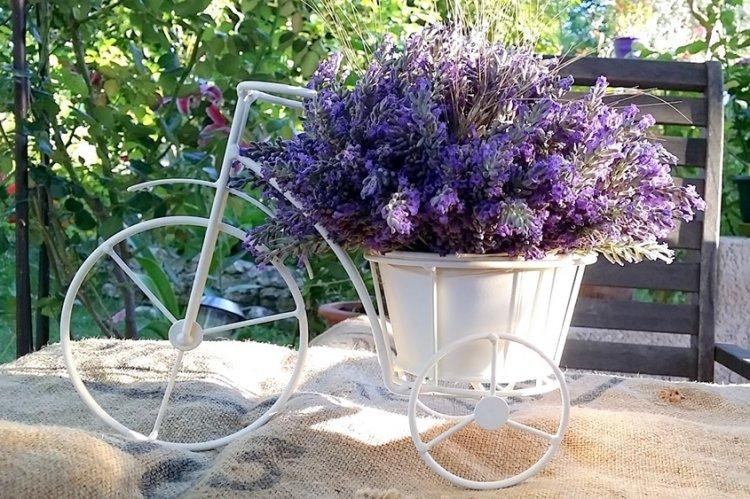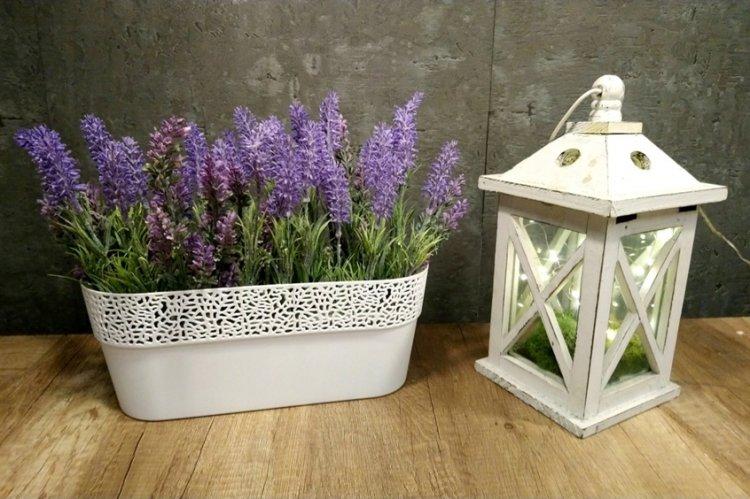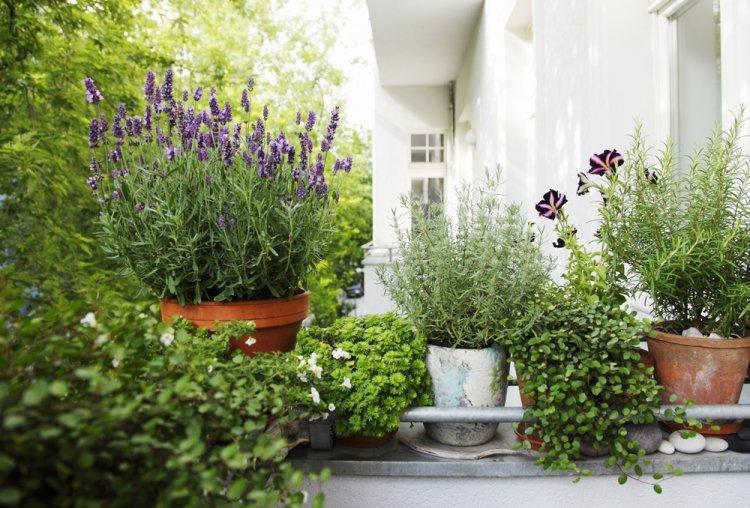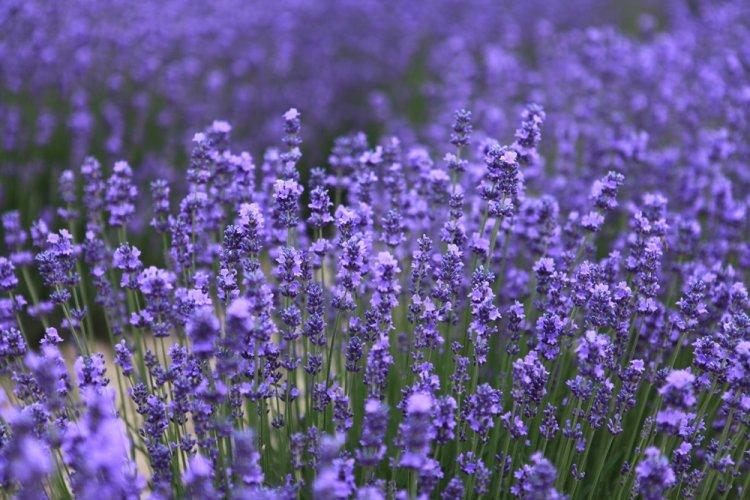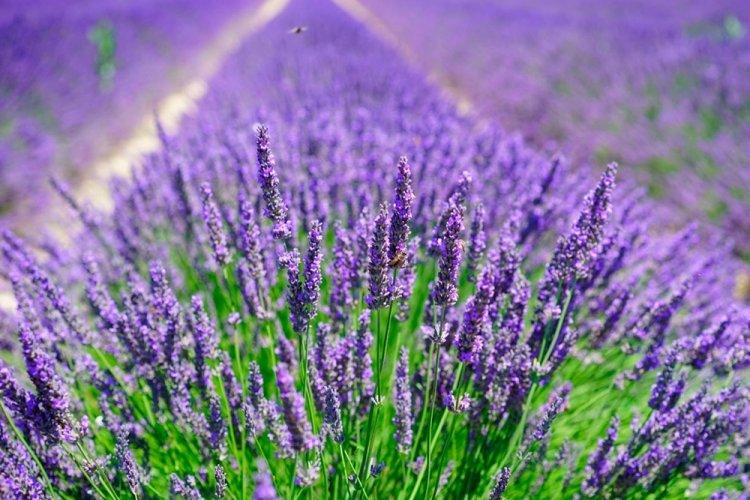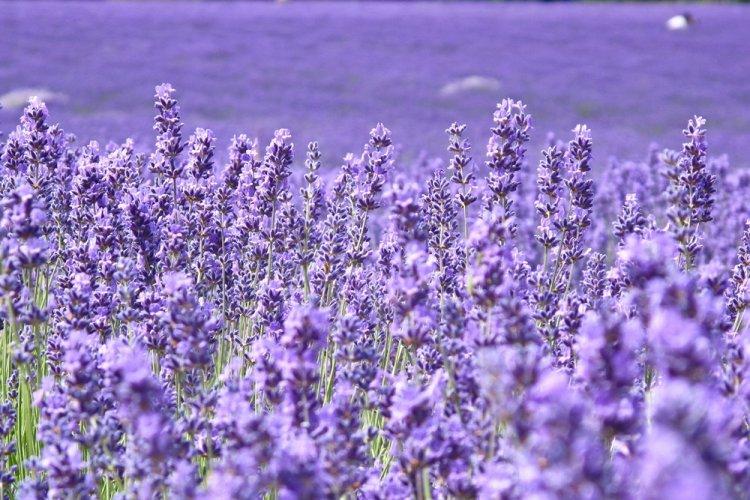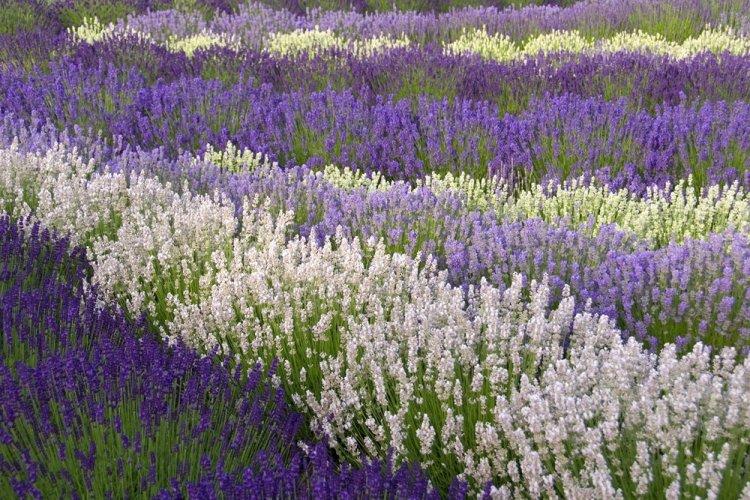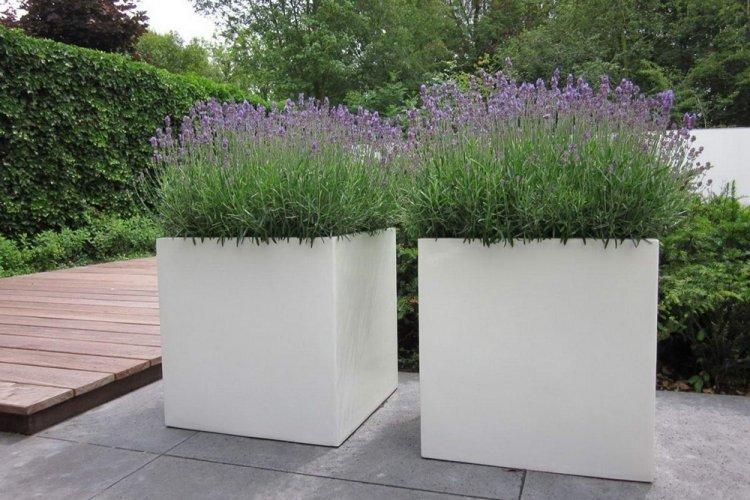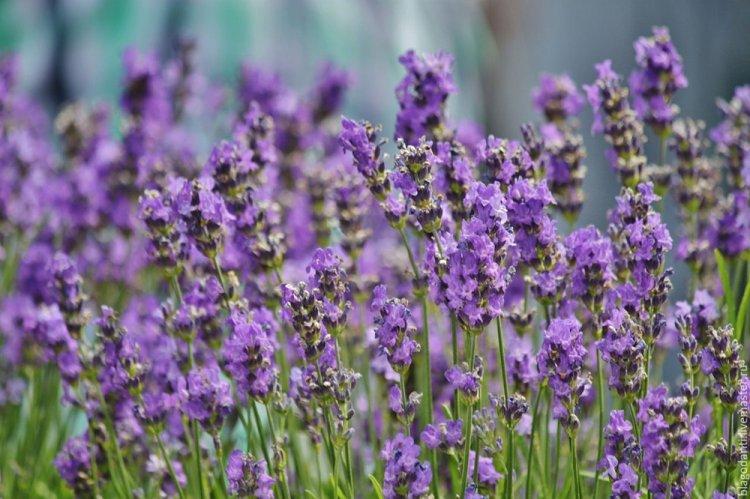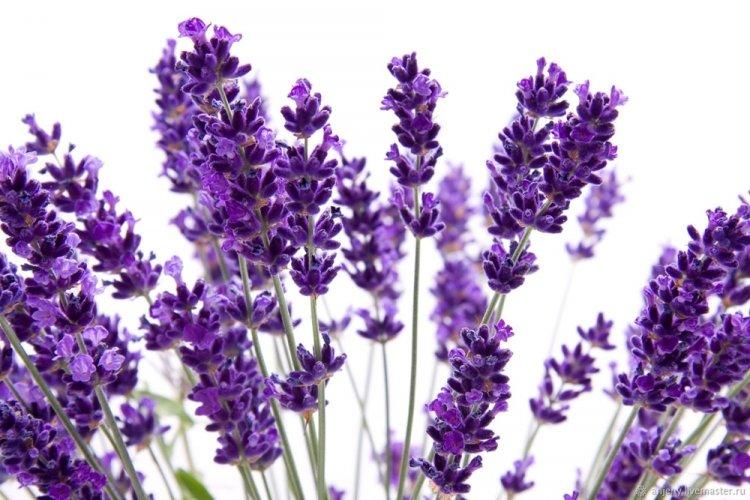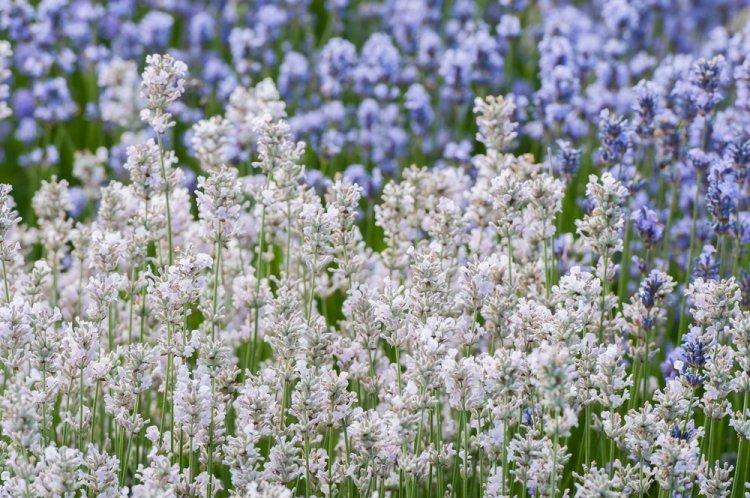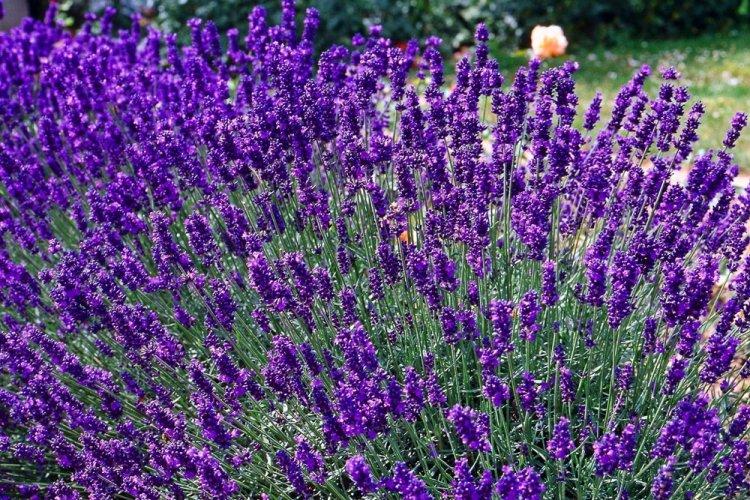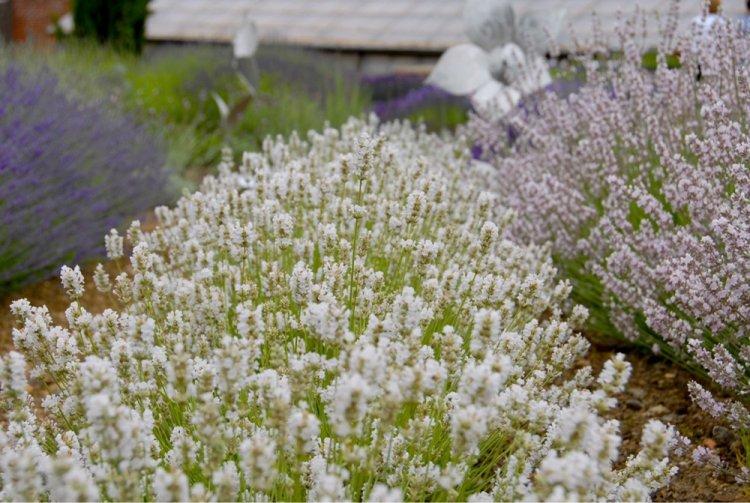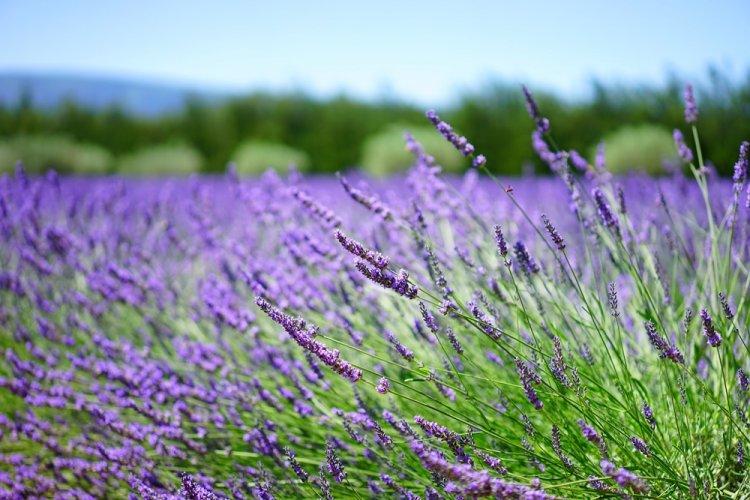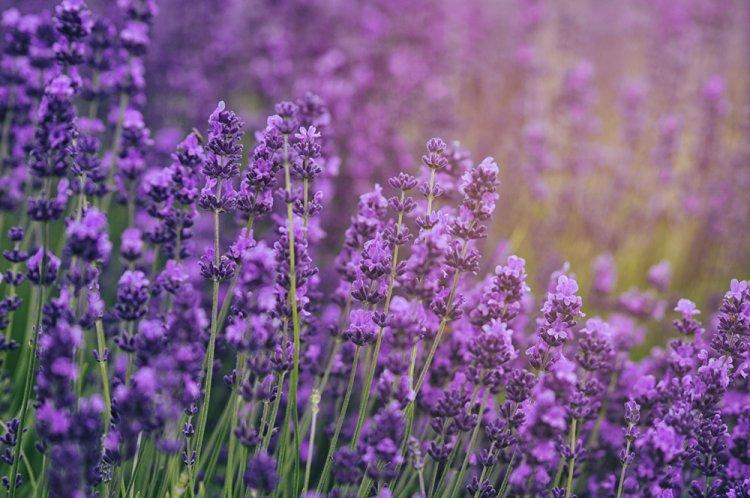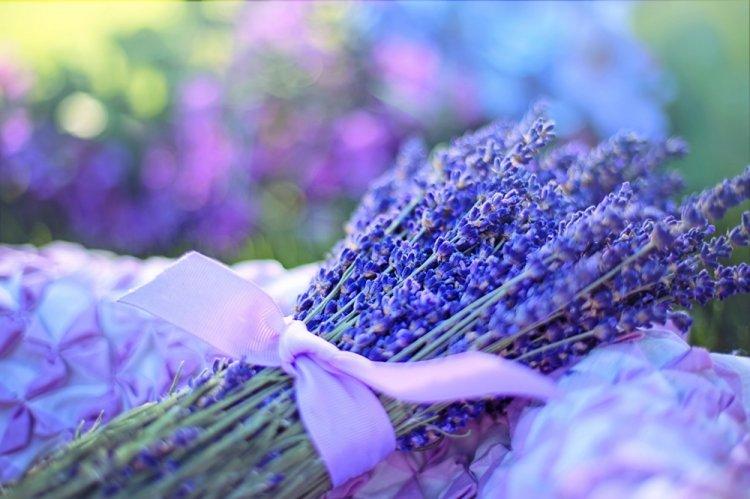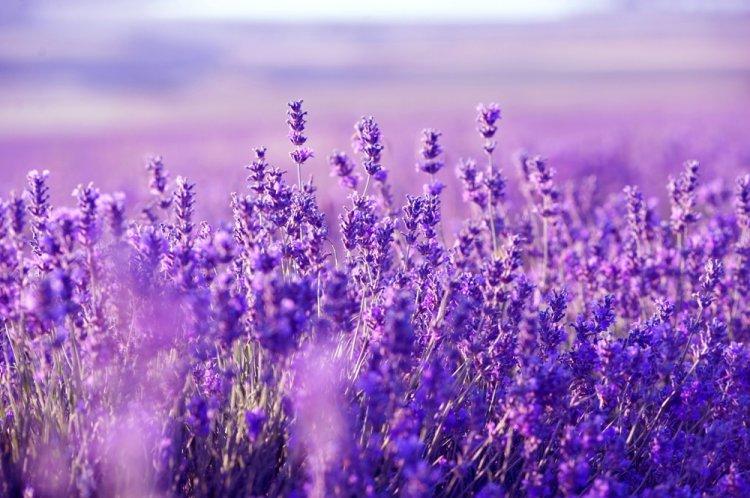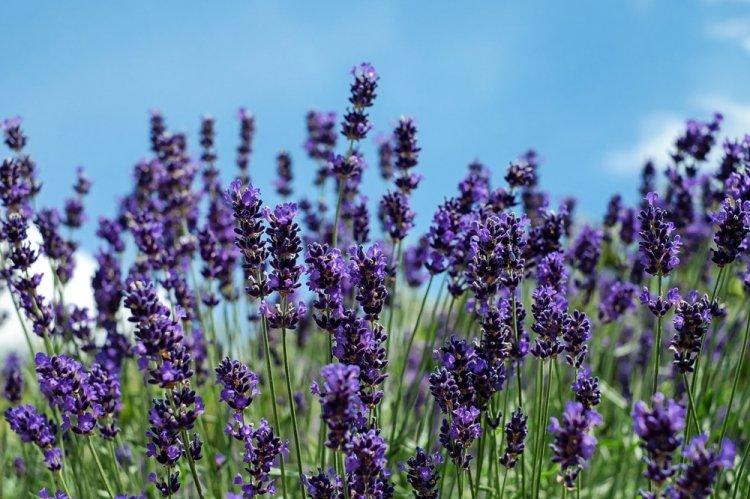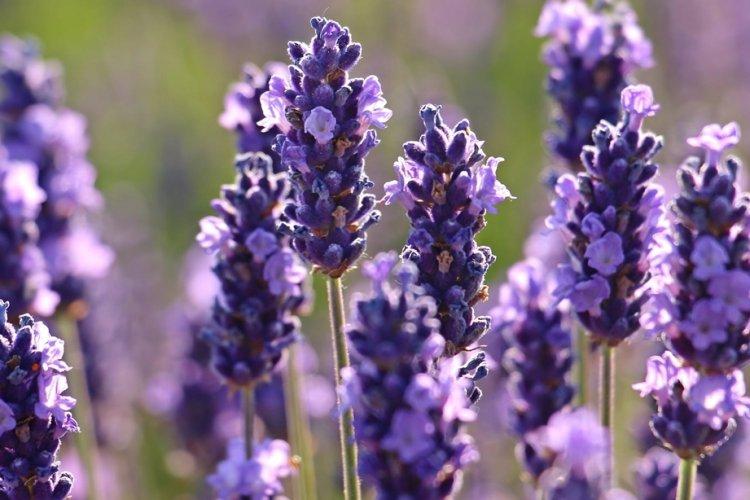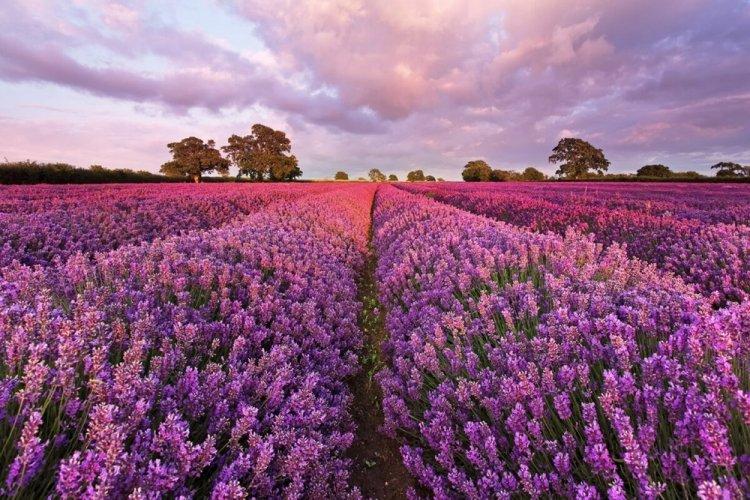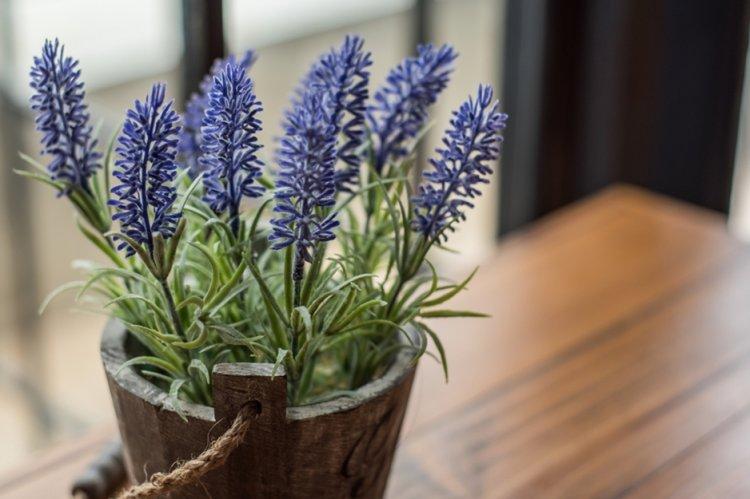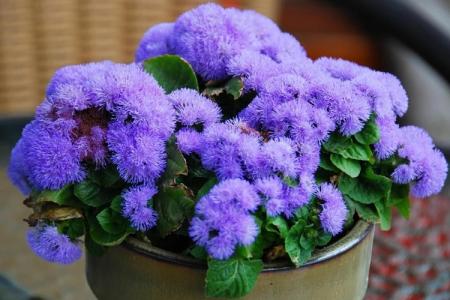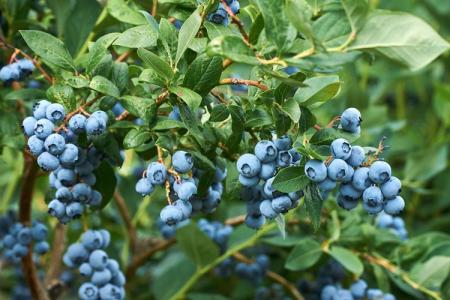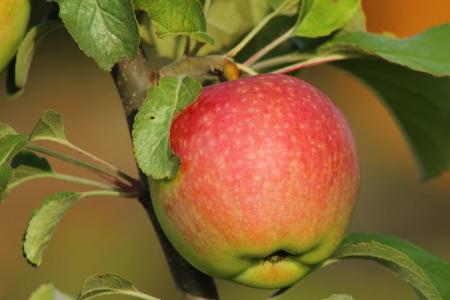
Lavender has long won the hearts of poets, musicians and artists with its elegance and delicate scent. Delicate lavender fields are the main embodiment of the spirit of Provence, and its dried flowers and essential oils are an invaluable ingredient in cosmetology and medicine. Here's how to grow lavender yourself and how to care for it!
general information
In its natural habitat, lavender is an evergreen perennial. In many countries, it is even grown on an industrial scale, because it is then used in pharmaceutical and cosmetic industries. About 80% of all lavender in the world is grown in France, and there it has long become a real symbol of the province of Provence.
Lavender is a member of the same family of lamines as basil, sage, rosemary or lemon balm. In addition to France, it grows throughout southern Europe, Australia, India and Africa. It used to be used for washing and taking a shower with it instead of soap, so the Latin "lava" from the name of lavender literally means "to wash."
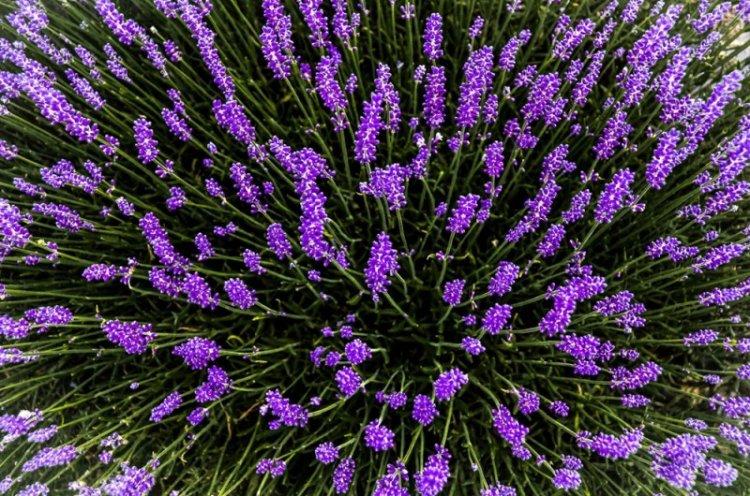
Lavender has a fibrous woody rhizome, sometimes extending up to 2 m deep. The height of the stems reaches 60 cm, and the highest ones are slightly lignified from below. Elongated bright green leaves with silvery reflections grow opposite each other. Small fragrant flowers are collected in sotsvtia-ears.
A bouquet of dry lavender will fill the room with a pleasant aroma and ensure a restful, healthy sleep. Shredded herbal pouches and pillows relieve stress and help you relax. Lavender essential oil is renowned for its antiseptic and sedative properties.
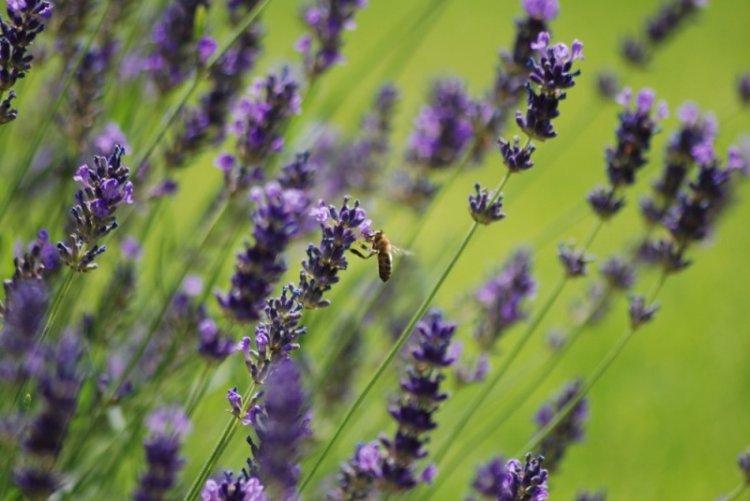
Types of lavender
There are about 30 types of lavender in nature, but only a couple of them are cultivated. The most popular varieties are medicinal English and broadleaf French. English lavender is best suited for Russian conditions, especially for Moscow and the region.
Narrow-leaved english lavender
This is the same classic, real or true lavender that we see most often because it tolerates winter well. Its shoots stretch up to 2 m and grow stiff at the base. The dense leaves are slightly lowered downward and, as they mature, acquire a muted gray-green hue.
Small purple or lilac flowers are gathered in spikelets. Less common are white varieties - for example, Sentiva Silver or Alba. There is also a blue variety of English lavender - Sentiva Blue. Popular ornamental varieties include the dense, compact Munsted bushes, pinkish Rosea, spectacular hedgerow Hydecoat and silvery Dolphin Lavender.
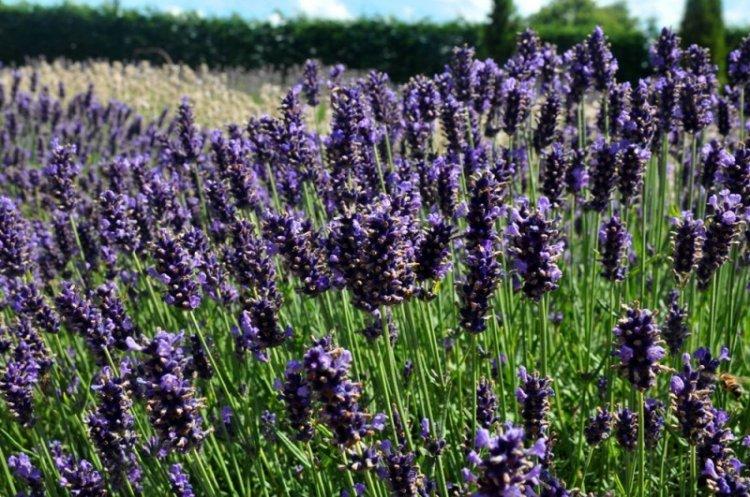
Broadleaf lavender
The second most popular variety is more common in apartments and houses because it is more sensitive to weather conditions. This variety is notable for its pronounced strong aroma. It blooms earlier than most others - even before the beginning of summer.
There are unusual shades - burgundy Helmsdal, blue Tiara with cream centers, dark purple Regal Splendor and Willow Vale. New varieties appear periodically, such as the large Rocky Road lavender.
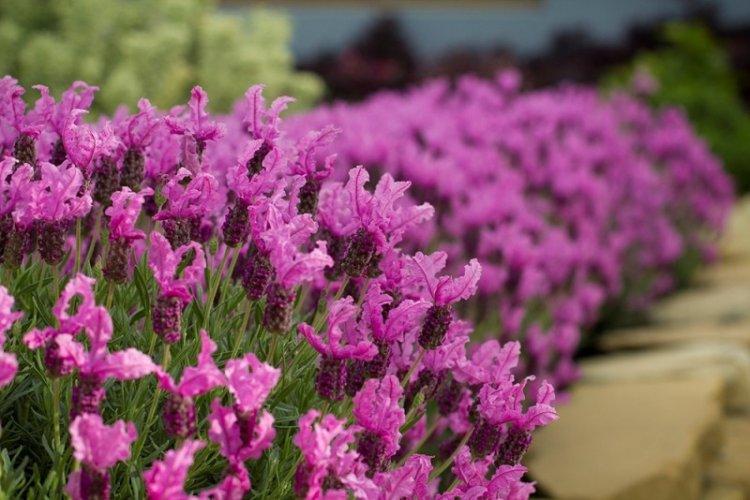
Jagged lavender
The decorative shrub is used to decorate plots and alpine slides for the summer. She is also planted in room boxes and flowerpots so that she lives longer. Toothed lavender loves warmth and does not tolerate frost well, so temperatures below -8 degrees are destructive for it.
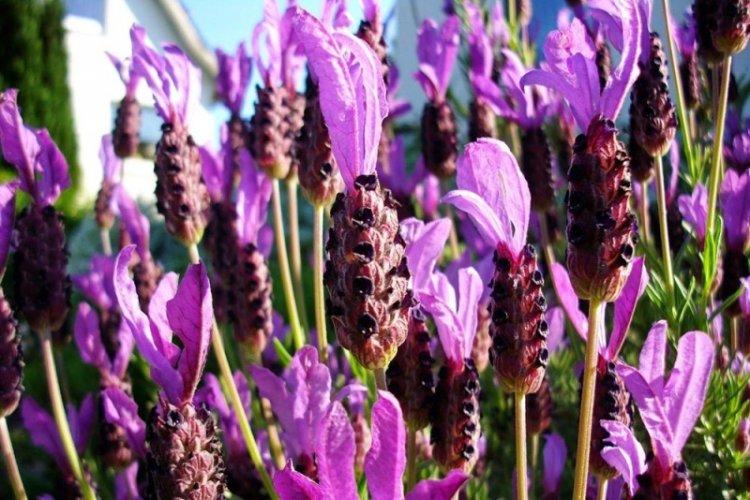
Hybrid lavender
This variety is also called Dutch and it is he who is usually grown on an industrial scale for the manufacture of essential oils and drying. These are large, tall shrubs up to 2 m in height with large oblong flowers. They are distinguished from English by a more silvery color of leaves and sensitivity to cold weather.
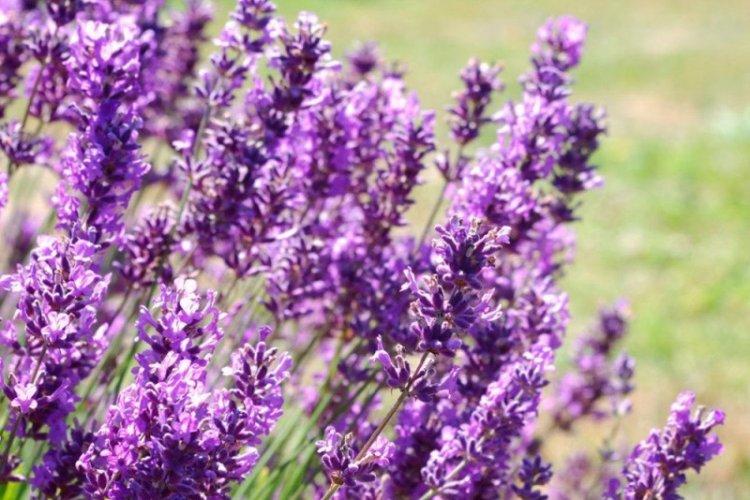
Lavender care
Lavender is planted in the garden, but seedlings can be grown in the apartment.It blooms in mid-summer and is almost hassle-free even in cooler regions. The main thing is not to plant seeds for winter, otherwise they will most likely freeze.
Temperature
Lavender seedlings emerge at a temperature of 15-22 degrees and always with a lot of light. Before planting in the ground, they must be gradually prepared for natural conditions. To do this, clean up the temporary greenhouse for sprouts every day for longer. Otherwise, adult lavender thrives on normal outdoor conditions.
If you get too cold in winter, take care of a winter shelter for lavender. It cannot be insulated with leaves, because the shrub will rot. Cut the bush and throw it until it warms up with spruce branches - it warms up enough and at the same time allows air to pass through.
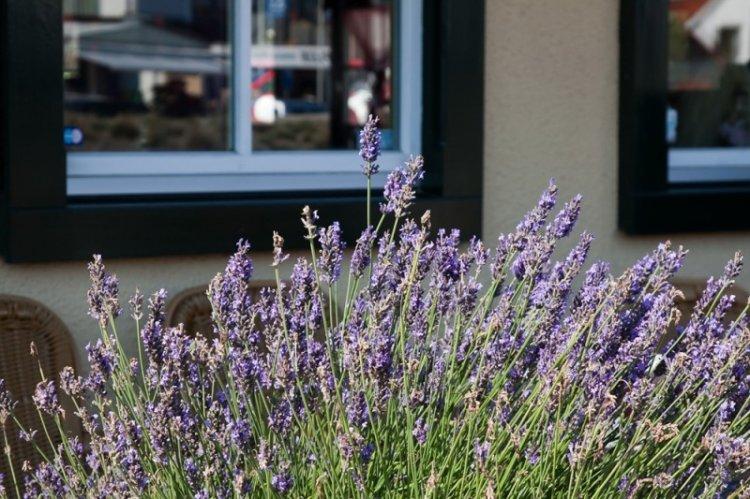
Watering
Young seedlings definitely require intensive watering. In the future, lavender also craves stability, and in the heat - an increase in intensity. After watering or heavy rain, you need to loosen the soil well. Simplify your task and cover the ground with peat when replanting flowers.
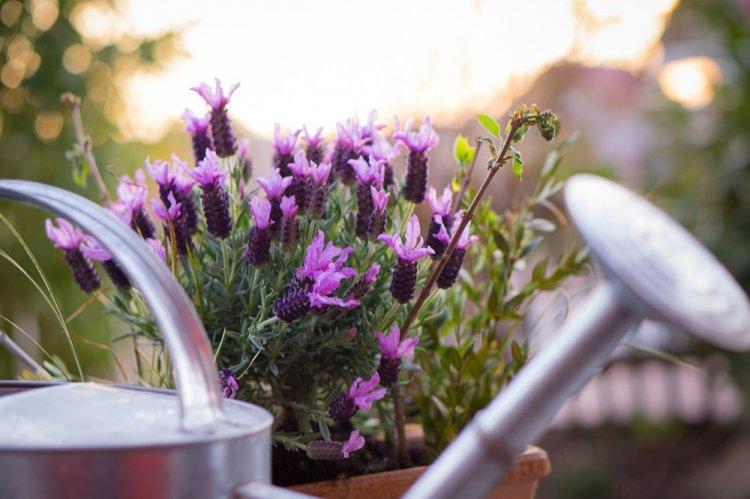
Site and soil selection
Lavender has a hard time tolerating excess moisture, so swampy areas or too wet areas are not suitable for planting. Choose an area where dry sandy loam or drained loamy soil prevails. If it is too acidic, add some crushed limestone first. Before planting seedlings, the soil must be dug up about 20-30 cm, loosened and peat or compost added.
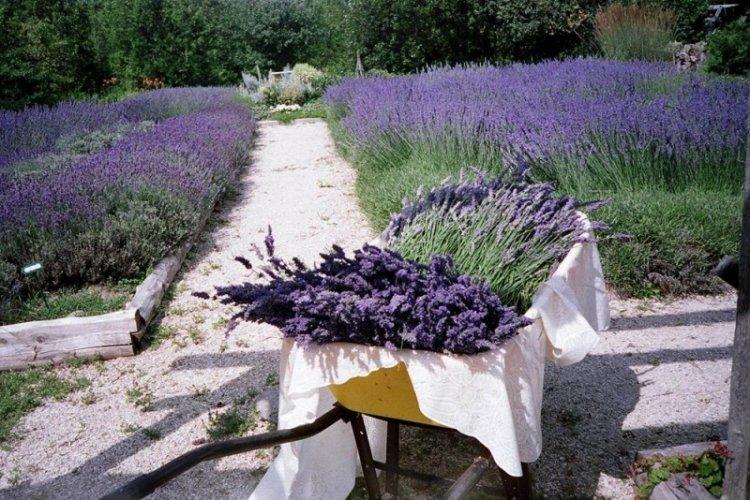
Landing
Lavender can be sown directly into open ground somewhere in the middle of autumn. In order for the seeds to germinate better, they need to be prepared - mixed with moistened sand and left for about 2 months in a cool place or in the refrigerator. But this method is really only effective in warm regions.
Seeds for seedlings are sown later - in late winter or early spring. Fill the flowerpots with a mixture of 2 parts of humus and a part of coarse sand, break up all the lumps and disinfect in the oven or with potassium permanganate. Scatter the seeds evenly over the surface, cover with a thin layer of sand and lightly moisten.
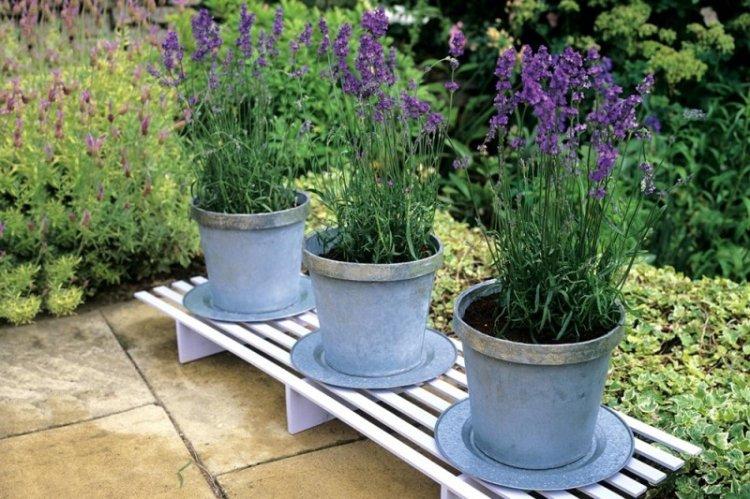
Cover the pots with plastic or a glass box, but remember to ventilate once a day. Saplings definitely need more light and heat. When the bushes grow up, they are transplanted into a large box at intervals of about 5 cm.
By the end of spring, you can plant small bushes in the ground in open, sunny areas. Leave a distance of about 1-1.2 m between the bushes for tall varieties or 0.8-1 m for compact ones. The root system should be placed in the hole so that the neck goes into the ground by about 4-6 cm.
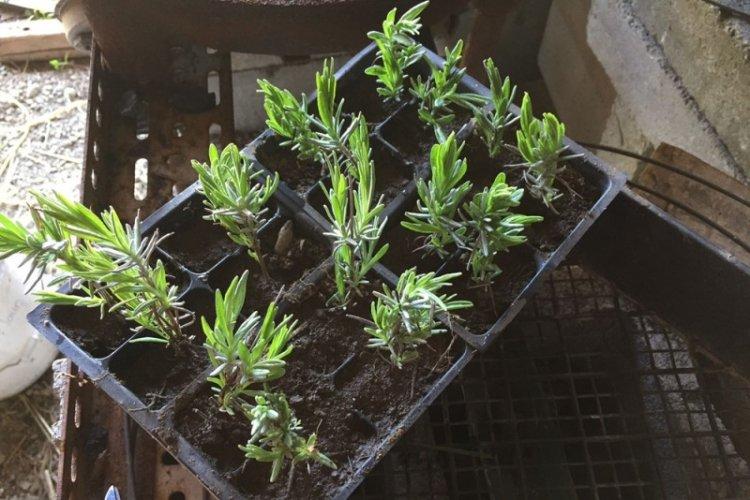
Reproduction
If there is already lavender on the site, the easiest way is to propagate it by cuttings from a stem up to 10 cm long. They are immediately planted for rooting in a moist loose substrate under an impromptu greenhouse. Large mature shrubs can be split up in the fall and transplanted into separate holes. And in the spring, lavender is propagated by layering: for this, the long stem must be bent to the ground, sprinkled with soil and left for the summer.
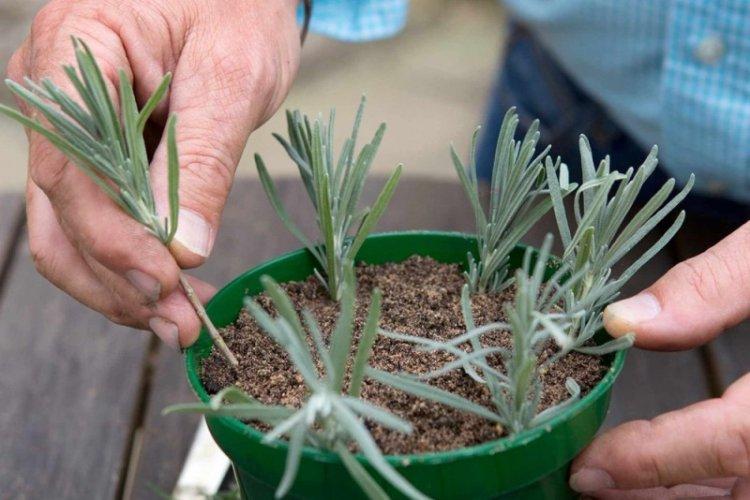
Pruning
Lavender needs regular annual pruning to remove dying buds. In the fall, all the stems are shortened at once - so the shrub will be beautiful and neat. Make sure that the branches do not stretch too high and do not bend under their own weight. And after about ten years, a rejuvenating pruning is needed to short young shoots of 0.5 cm.
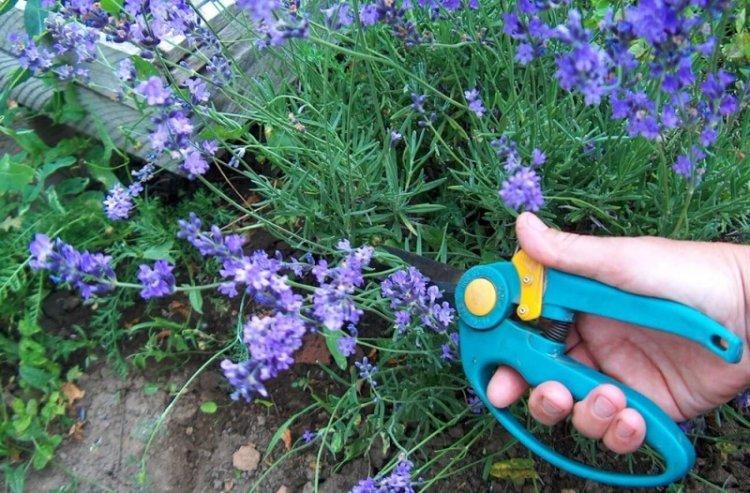
Pest and disease control
Whether in the natural environment, in the garden in the open field, or at home, lavender is not too sensitive to pests and parasites. Sometimes pennies and beetles appear, which can be collected mechanically. After that, treat the shrubs with insecticides and be sure to replace the mulch layer.
From an excess of moisture and after prolonged rains, lavender is sometimes affected by gray rot. It cannot be cured normally, so it is better to immediately remove the damaged shrub before the disease spreads to others. Only in the early stages can you try to cut out all the damaged parts and treat the sections with an antiseptic.
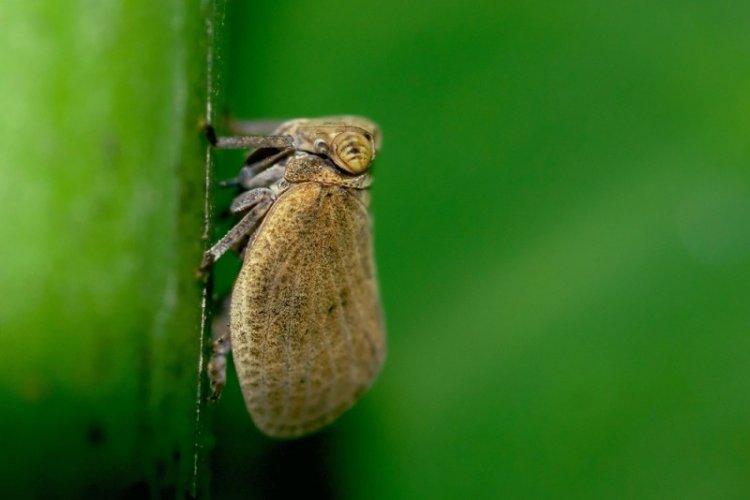
Lavender - photo
Lavender is a real decoration of any garden or flower bed. It is adored by flower growers and landscape designers, and all for good reason. Just take a look at our selection of photos!
